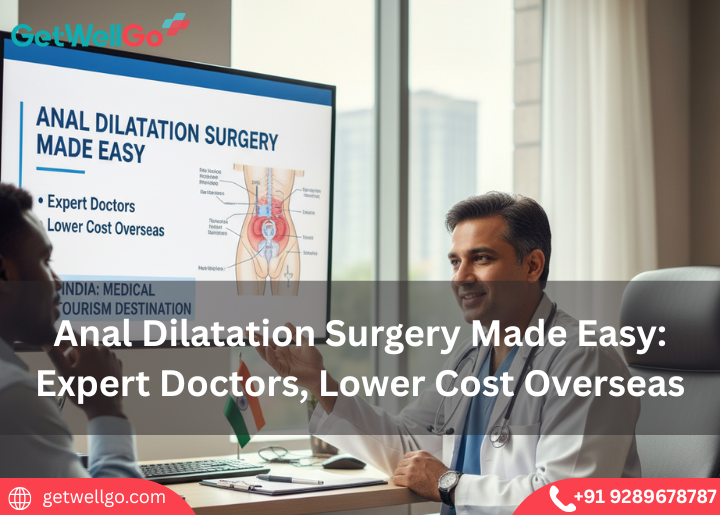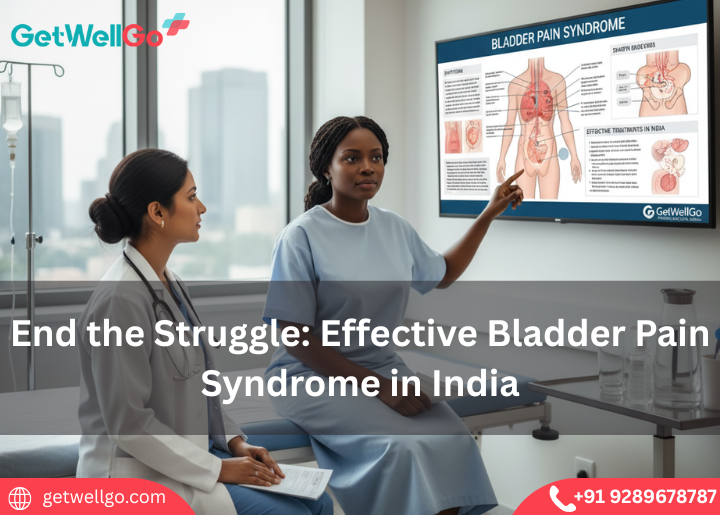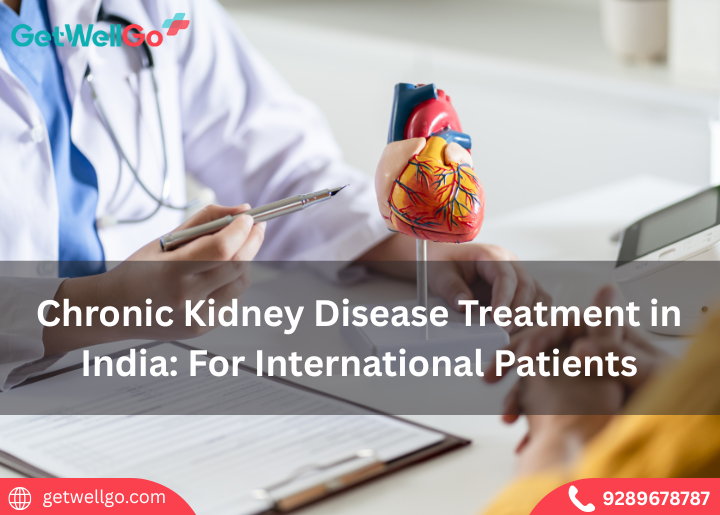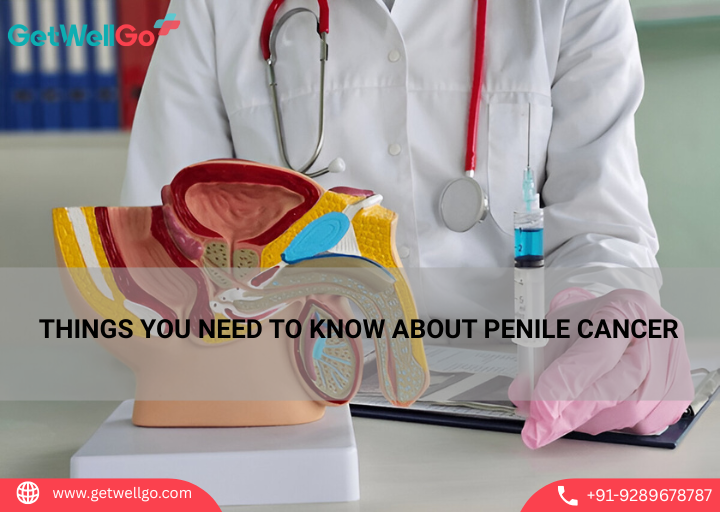
Safe, Reliable, and Affordable Central Venous Access for International Patients
Safe, reliable, and affordable central venous access with GetWellGo. Trusted care for international patients seeking world-class medical support.
Read MoreGetWellGo connects international patients to India’s leading surgeons for enlarged prostate surgery. World-class care, advanced facilities & cost savings.
.png)
Category
UrologyPublished By
GetWellGo TeamUpdated on
14-Aug-2025Dr. Rajiv Yadav, urologist specialist in India, has over two decades of experience in the treatment of Urological diseases involving Prostate, Kidney & Urinary bladder. His clinical focus is on Robot assisted Laparoscopic Surgery for Prostate Cancer, Kidney Cancer and Urinary bladder cancers.
Address: Artemis Hospital, Sector 51, Gurugram, 122001
A pioneer of robotic surgery in India, Dr. Gagan Gautam is a renowned specialist with over two decades of experience in the surgical treatment of urological cancers. His areas of expertise include robotic prostatectomy (prostate cancer), robotic partial nephrectomy (kidney cancer), and robotic cystectomy (urinary bladder cancer). A highly proficient robotic uro-oncological surgeon, Dr. Gautam is also an expert in open, laparoscopic and endoscopic operations for prostate, kidney and urinary bladder malignancies.
Address: Medanta-The Medicity, CH Baktawar Singh Rd, Medicity, Islampur Colony, Sector 38, Gurugram, Haryana, 122001
Dr. Anil Mandhani is the Chairman of Urology at FMRI, Gurgaon. His expertise in robotic surgery (more than 550 cases) is unparalleled and he has been known for managing complex situations emanating from deviant outcomes of surgery done by others. His vast experience in kidney transplant surgery (more than 1000 kidney transplants) with many modifications has been his force to reckon with.
Address: Fortis Memorial Research Institute Sector - 44, Opposite HUDA City Centre, Gurugram, Haryana, India 122002
Dr. Anupam Bhargava, is a well-known Genito-Urinary Surgeon (Urologist) practising in Delhi. He is the chairman of urology at Max Hospital, Saket. He specializes in endourology, reconstructive urology and prostate cancer.
Address: Max, Saket, 1 2, Press Enclave Marg, Saket Institutional Area, Saket, New Delhi, 110017
The surgery to treat an enlarged prostate is best known as Benign Prostatic Hyperplasia (BPH). Treatment is done in cases when an enlarged prostate also leads to considerable urinary symptoms that fail to improve adequately after medication or lifestyle modification.
What Is an Enlarged Prostate?
Benign Prostatic Hyperplasia (BPH) is the non-cancerous enlargement of the gland, which is common among men aged above 50.
The swollen gland touches the urethra and it results in:
When Should One Have Surgery?
Usually it can be considered using surgery when:
Transurethral Resection of the Prostate (TURP)
Transurethral Incision of the Prostate (TUIP)
Laser Surgery
Open Simple Prostatectomy or Robot-assisted simple Prostatectomy
Minimally Invasive Choices
Enlarged prostate (BPH) lies under treatment, which depends on the size of your prostate, the magnitude of the symptoms, age, and health status in general, and desire to retain some functions, such as the ability to ejaculate.
Medications:
Safer, expedited healing, most often performed on a day-care basis.
UroLift System
Rezum Therapy
Prostatic Artery Embolization (PAE)
It is advised that it should be used in severe cases, very large prostrates, or in case of complications (urinary retention, kidney damage).
TURP (Transurethral Resection of Prostate)
HoLEP (Holmium Laser Enucleation)
PVP (Green Light Laser)
Open/ Robotic Prostatectomy
Enlarged prostate laser surgery is the latest and least invasive treatment method to tackle Benign Prostatic Hyperplasia (BPH) where laser energy is concentrated towards the problem area and extra warped prostate tissue removed or destroyed.
Its popularity has been advanced by the fact that it provides quick recovery, less bleeding and high levels of success as compared to conventional surgery such as TURP.
Holmium Laser Enucleation of Prostate HoLEP
PVP (Photoselective Vaporization -The Green Light Laser)
ThuLEP (Thulium Laser Enucleation)
Diode Laser Surgery
Removal of the enlarged prostate surgery is conducted when the patient has no good responses to the medicines or less invasive operations, or when the prostate size is large and results in another problem like struggling with the urine, bladder rock, or kidney issues.
This contrasts with partial tissue destruction (as is the case with destruction of the prostate with the use of TURP or laser vaporization). In this procedure, a significant part of the prostate gland is taken out in order to leave a lasting relief.
Open Prostatectomy
Simple Prostatectomy or Laparoscopic Robotic
HoLEP (Holmium Laser Enucleation of the prostate)
The rationale behind minimally invasive surgery to relieve enlarged prostate (BPH) is to offer the possibility of reduced bleeding, shorter convalescence, and hospital stay, and without major incisions, compared to standard TURP surgery or open prostatectomy.
These are normally conducted either with the urethra (no skin incisions) or by small holes.
Enlarged prostate surgery in India by GetWellGo
GetWellGo is regarded as a leading supplier of healthcare services. We help our foreign clients choose the best treatment locations that suit their needs both financially and medically.
We offer:

Safe, reliable, and affordable central venous access with GetWellGo. Trusted care for international patients seeking world-class medical support.
Read More
GetWellGo connects international patients to top hospitals for bilateral hydrocele surgery at reduced costs, ensuring quality care in trusted destinations worldwide.
Read More
GetWellGo connects you to expert doctors for Anal Dilatation Surgery abroad—safe, effective, and affordable care for international patients.
Read More
Experience advanced and safe Percutaneous Nephrolithotomy in India for kidney stone removal. Get expert care, affordable treatment, and seamless medical travel support for global patients.
Read More
Retrograde Pyelogram in India offers precise urinary tract imaging using advanced technology. Get accurate diagnosis, expert care, and affordable treatment for kidney and ureter conditions.
Read More
Travel to India for suprapubic cystostomy with expert urologists. Get advanced, safe, and affordable treatment at top hospitals, tailored for international patients seeking quality care.
Read More
GetWellGo connects international patients to top bladder pain syndrome treatments in India, offering advanced care and trusted medical experts.
Read More
Travel to India for UTI treatment with GetWellGo. Connect with expert doctors and trusted hospitals offering safe, affordable care for international patients.
Read More
GetWellGo connects patients worldwide to India’s best hematuria treatments—affordable, trusted, and expert care for faster healing with confidence.
Read More
Explore advanced and affordable chronic kidney disease (CKD) treatment in India for international patients, with expert nephrologists and world-class dialysis and transplant care.
Read More
Affordable gallbladder surgery in India for global patients with GetWellGo. Quality care, seamless travel, and expert medical guidance throughout.
Read More
Learn key facts about penile cancer, its symptoms, treatment, and care options. GetWellGo guides international patients with trusted medical support.
Read MoreFill the form below to get in touch with our experts.
Please fill in your details below and our experts will get back to you.